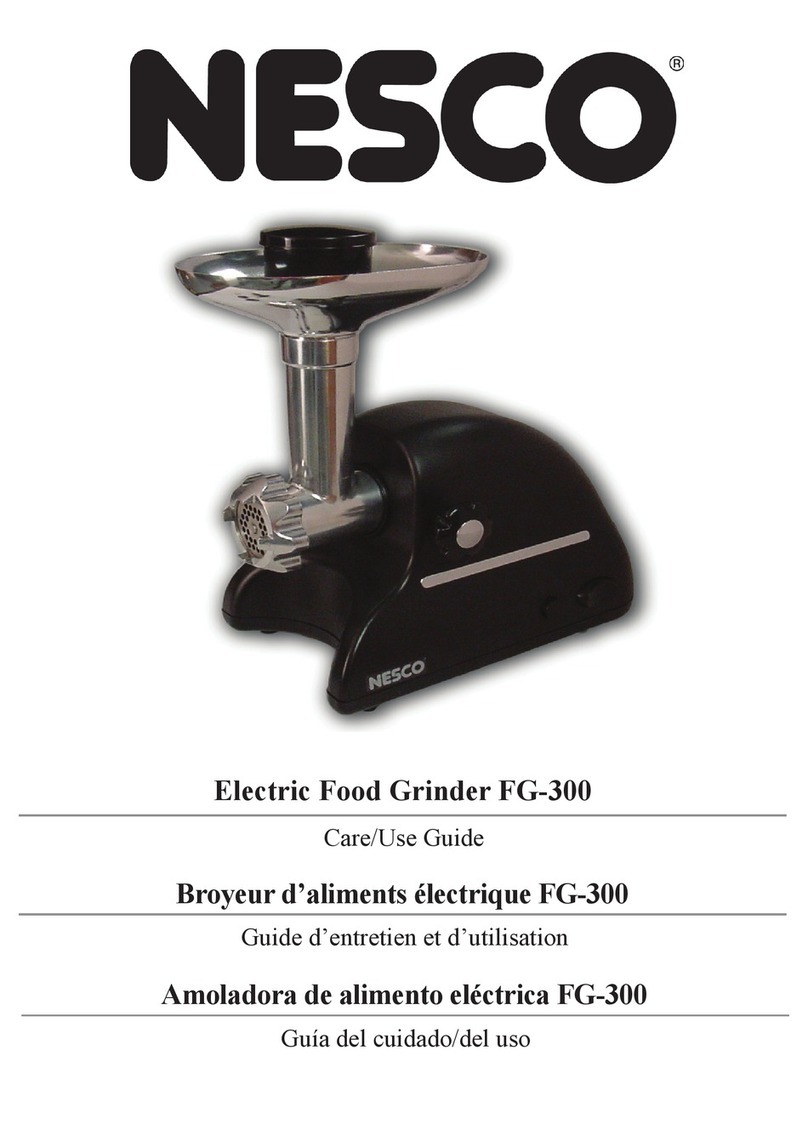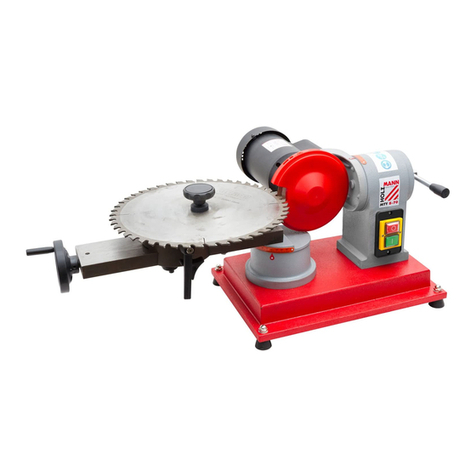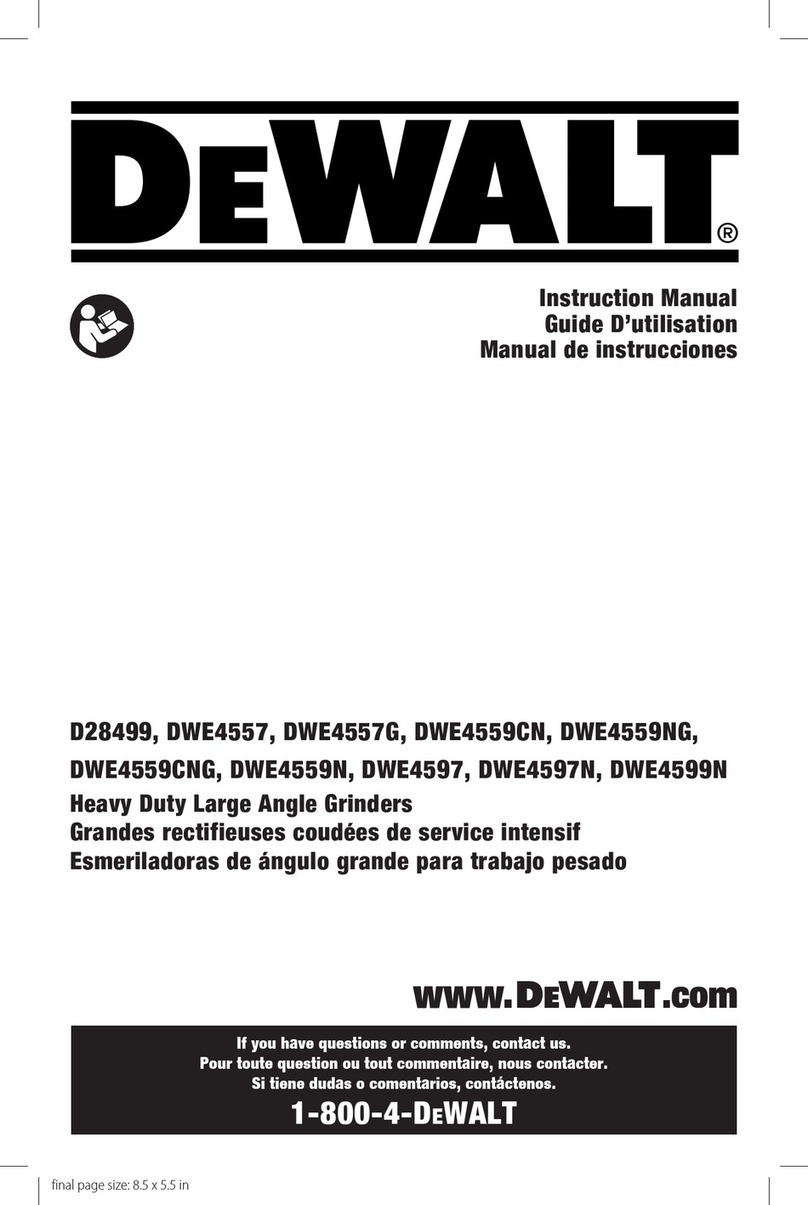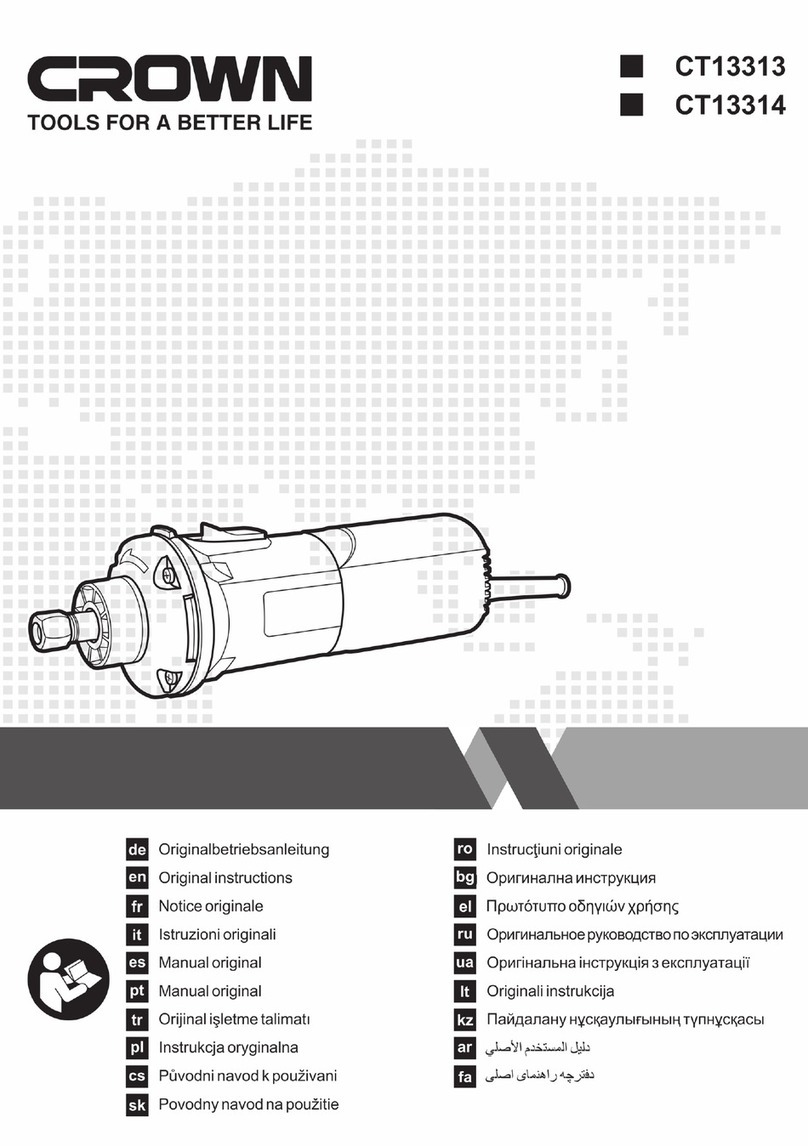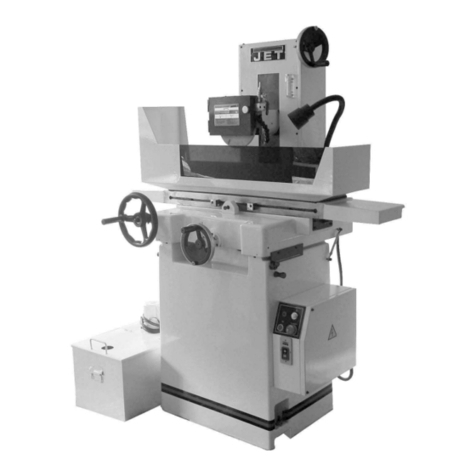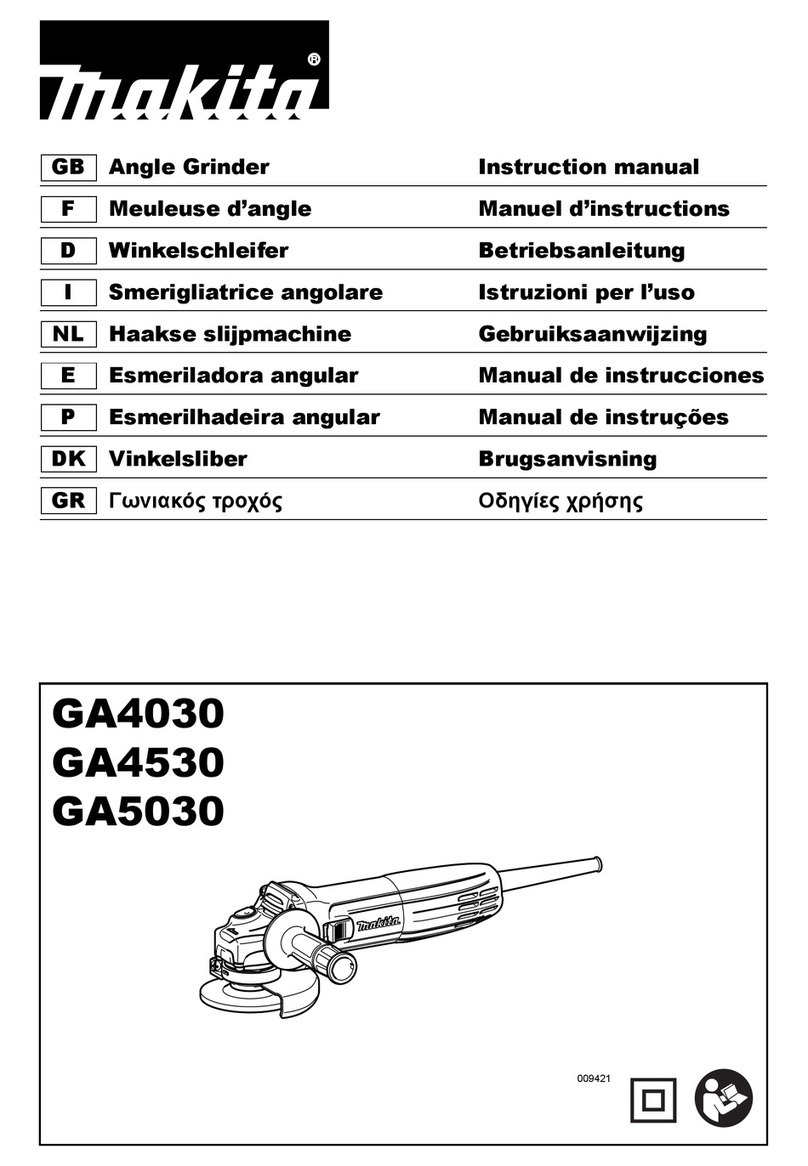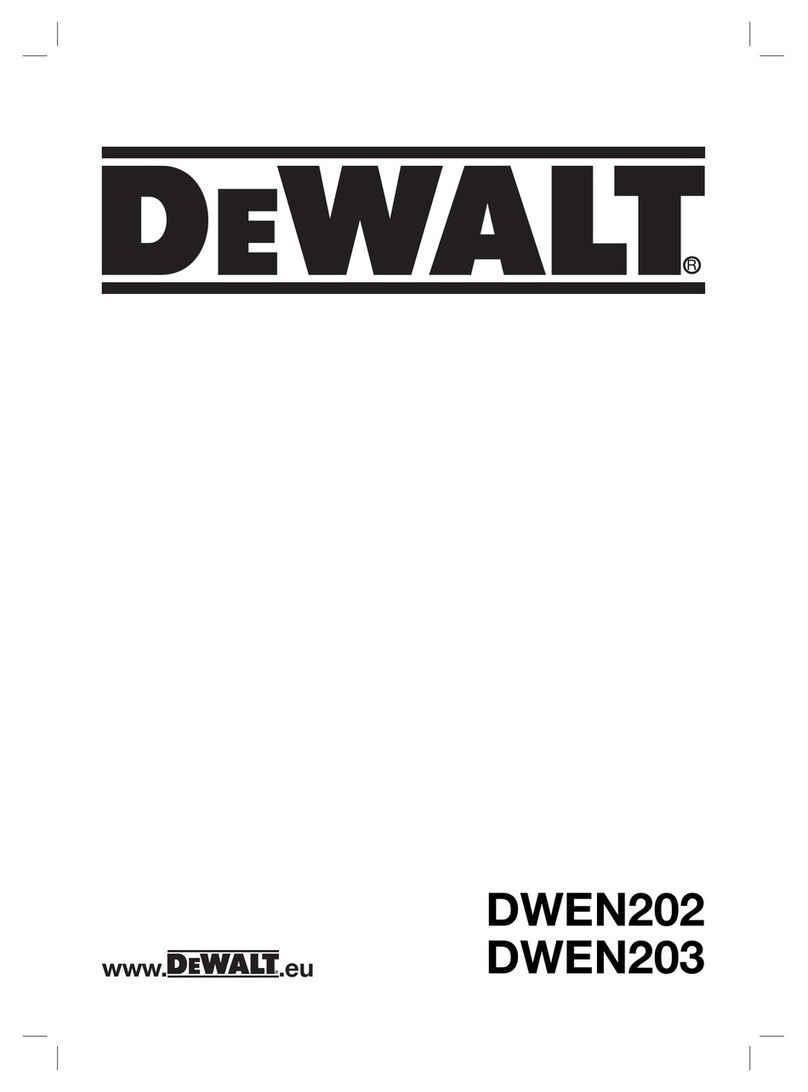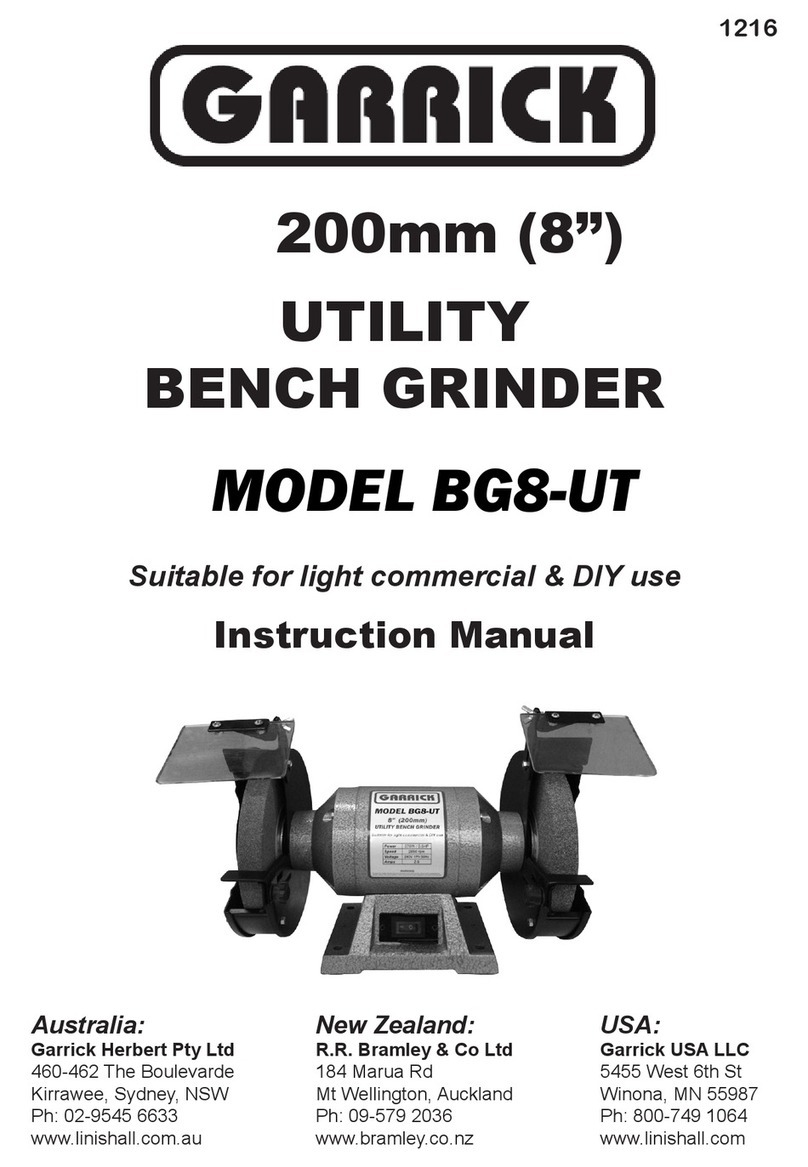TOP CAT 467BRA1; 467BRA2; 467BRA4; 467BRAC; 467BRAD;... Instructions for use

General Operators Instructions
and
Maintenance Manual
467BRA Series
Right Angle Grinders
Top Cat ® Air Tools, Manufactured by T.C. Service Co.
38285 Pelton Road, Willoughby, OH 44094 U.S.A.
Ph: (440) 954-7500 or (800) 321-6876 ● Fax: (440) 954-7118 or (877) 800-3589
E-Mail: [email protected] ● Web Site: www.tcservice.com
Read Safety Recommendations Before Operating Tool
467BRA Series Right Angle Grinders
Model Exhaust Throttle Power Case Weight
Number Direction Type Output Material
467BRA1
467BRA2
467BRA4
467BRAC
467BRAD
467BRA5
1/4 Inch Built-In Collet
Changable Insert Collet
1/4-20 Internal Thread
2 Inch (50mm), 3 Inch (75mm),
4 inch (100mm), 4 1/2 inch (114mm),
5 inch (125mm) or 6 Inch (150mm)
Type 1 or Type 27 Wheels
3/8-24 x 0.58 Inch (15mm)
5/8-11 x 0.98 Inch (25mm)
3/8-24 x 0.98 Inch (25mm)
Rated
Speed
Side
(L) Lever
or
(K) Safety
Lever
11000
to 14000
R.P.M.
0.9 H.P.
(675 W)
Steel
or
Aluminum
Aluminum Steel
2.8 Lbs
(1.3 Kg)
3.7 Lbs
(1.7 Kg)
Overall
Length
9.8 Inches
(249 mm)
Housing
Diameter
1.8 Inches
(45 mm)
Working Air
Consumption
25 CFM
(11.8 L/S)
Spindle Thread
& Length/Output
Abrasive
Capacity
9.6 Inches
(244 mm)
1/4 Inch Burrs/Mounted Points
Burrs/M.P. of Size Matching the Insert
Roll Cartridges w/ 1/4-20 Mounting
467BRA(C)(D)(5)
467BRA(1)(2)(4)

This is meant to highlight sections of safety standards published by the American National Standards
Institute and the Occupational Safety and Health Administration. This is not meant to replace those
standards but only highlight certain areas.
When care is taken to ensure that the right tool is operated properly, and safety and maintenance
procedures are followed, accidents can be avoided. Read and follow all instructions and directions.
Comply with all rules governing the use of power tools, personal protective equipment and equipment
guards.
Remember - machines, attachments and accessories must be used only for the purpose for which
they were designed. Safety reasons and product liability prohibit any modifications to tools. Any
attachments or accessories must be agreed to in advance with an authorized technical representative
of T.C. Service Co.
Operators Instructions and Safety Precautions
The grinding equipment must be approved for the rated speed of the
machine. The rated speed, marked on the machine, should not be
exceeded. Be sure to learn the proper handling and storage of abrasive
wheels and inserted tooling.
Inspect the wheel guard for any signs of wear and that it is properly
mounted to the tool. Any guard showing signs of wear such as bends,
chips, nicks, or cracks should be replaced.
Always wear eye and hearing protection, and when necessary, other
personal protective equipment such as gloves, an apron, and helmet.
Additional information on eye protection is available in the following
national regulatory standards.
1) Federal OSHA Regulations 29 CFR, Section 1910.133 (Eye and
Face Protection)
2) ANSI Z87.1 (Occupational and Educational Eye and Face Protection)
Check hose size and air pressure. The air pressure at the tool shall not
exceed 90 psi (6.2 bar). All hoses should be inspected regularly and
kept away from heat, oil and sharp edges. Be sure the tool is secured to
the air hose.
Measure the speed of grinders every 20 hours of actual use or once per
week, whichever comes first.
Measure speed of all types of grinders after maintenance or repair,
whenever a grinder is issued from the tool crib and at each wheel
change. Several readings should be taken.
This form of inspection should be made with the grinding wheel removed.

Proper mounting of grinding
wheels and inserted tooling
is crucial to safe operation
and efficient working condi-
tions. Ensure the exhaust
air is directed away from
bystanders.
Disconnect the tool from the air
supply before doing any service.
This prevents accidental start-ups.
Do not disassemble or adjust the
governor. The governor is guaran-
teed for the life of the tool, if not
abused.
The safety procedures for operating air tools are everyone’s responsibility. The following lists several
aspects of air tool safety that should be considered during operation. Please be aware of the these
aspects and report any unsafe practice you see to a supervisor or safety officer immediately.
1) Start any new wheel under a bench and away from bystanders. (Run for a minimum of one
minute.)
2) When starting a cold/new wheel, apply to the work slowly, allowing the wheel to warm gradually.
3) Support the work piece properly.
4) When cutting off, support the work piece so that a jamming of the wheel does not occur. (A Slot
shall remain constant or become wider during operation.)
5) If a jamming of the wheel does occur during a cutting off operation, shut the air supply off to the tool
and ease the wheel free. (Inspect the wheel for damage before continuing operation.)
6) Ensure that sparks from the process do not create a hazard to the eyes or will ignite the
environment.
7) Grinders shall not be used in potentially explosive atmospheres.
8) Pneumatically driven tools are not generally insulated from coming in contact with electrical
sources. Be sure to avoid contact with wires or other possible current carrying sources.
9) The operator must check that no bystanders are in the vicinity.
10) Remember that there is a running on after the throttle has been released.
11) If a grinder fitted with an abrasive wheel is dropped, the wheel must be thoroughly examined
before re-use.
12) Disconnect the tool from the air source before servicing and changing wheels.
13) Release the control device in case of interruption of air supply.
14) Always keep the tool in a clean, dry place when not in use.
15) Beware of loose hair and clothing so as not to become tangled or trapped during operation.
16) The inserted tool on heavy types of percussive non-rotary tools is exposed to heavy strains and
can after long periods of use break due to fatigue.
17) Unexpected tool movement or breakage of inserted tooling may cause injuries to lower limbs.
18) Unsuitable postures may not allow counteracting of normal or unexpected movement of a power
tool. (A working position shall be adopted which remains stable in the event of a break up of inserted
tooling.)
19) Do not hold the tool near the body when operating.
20) Keep a firm grip on the tool body during operation.
Safety in Operation
Airborne particulate
resulting from the
grinding process can
cause hazards. Wear
appropriate protective
equipment.

Maintenance

Disassemble
1. Disconnect tool from air supply and remove all wheels and accessories.
2. Secure the tool in vise vertically with angle head toward the upward direction. Clamp onto flats of the backhead (400-G-4-GL[S]).
3. Unscrew lock nut (406-38) with the use of a wrench. The angle head assembly will disconnect from motor housing (404-41[S]). Set angle
head assembly aside for now. (Should the motor retainer (406-39) come off with the angle head assembly, then clamp the lock nut (406-38)
into a vise and remove motor retainer with motor retainer wrench (1100-350.)
4. Remove coupling (406-41), exhaust sleeve (400-G-17S), o-ring (400-51) and exhaust screen (402-134).
5. Unscrew and remove motor retainer (406-39). (Flats are provided for a wrench, or a special tool (1100-350) is available for easier
removal.)
6. Grasp motor assembly out of motor housing. Remove from vise.
The Motor Assembly
7. Clamp the motor assembly into a vise vertically with the governor in the upward direction. Clamp lightly onto the spline.
8. Unscrew and remove the governor assembly (AA-406-XX) with a wrench. {Left Hand Threads} (A special governor wrench (1100-830)
is available.)
9. Remove from vise.
10. Install brass jaws onto vise. Secure the motor assembly vertically in the vise with the geared end toward the downward direction. Clamp
onto the outside diameter of cylinder (400-2G) and rear endplate (404-19).
11. Tap the spindle (406-20) out of rear bearing (404-9) with use of a 3/16” punch. Be sure not to drop the front motor assembly when it
becomes free. Remove from vise.
12. Push the rear bearing out of the read endplate with use of a small screwdriver.
13. Lift the rotor (400-5), blades (400-6), key (400-10) and front endplate (400-7) from the front motor assembly.
14. Remove retaining ring (400-46) from the motor spindle with use of snap ring pliers.
15. Support the front spindle assembly vertically on a suitable drill block. Press spindle through front bearing (400-G-11) with an arbor press.
Angle Head Assembly
16. Secure right angle head assembly in vise so that the angle head neck is vertical. A head holder (1100-818) that fits against the front
face of the angle head is available.
17. Remove head retainer (406-40) using a wrench on the wrench flats.
18. Lift off lock nut. Remove angle head from vise.
19. Grasp end of pinion gear stem (406-112) and pull pinion gear assembly from angle head.
20. Secure the pinion gear assembly in vise vertically with gear head (406-110) in downward direction. Clamp onto the side of gear spacer
(406-42) and rear most bearing (300-G-29).
21. Tap the pinion gear stem through the rear bearing with use of a 3/16 inch punch. Remove from vise.
22. Secure the pinion gear stem in a vise vertically. Clamp onto the flats of the pinion gear.
23. Unscrew and remove the pinion gear head with use of a wrench on the wrench flats.
24. Support the pinion gear stem assembly vertically on a suitable drill block. Press the pinion gear stem off of bearing (300-G-29) with
use of arbor press.
25. Remove retaining ring (406-45) with use of snap ring pliers.
26. Grasp the output spindle (406-13) and pull assembly free from right angle head (406-1B).
27. Secure the output spindle assembly in a vise vertically with output toward downward direction. Clamp onto the flats of the spindle.
28. Remove screw (591046) from end of spindle assembly. Remove from vise.
29. Support the spindle assembly vertically on a suitable drill block. Press spindle through bearings (400-9) & (590031), spacer (406-15),
ring gear (406-110), and key (406-4).
To check the throttle valve, secure the backhead horizontally in a vise. Clamp lightly onto the flats of the housing. Unscrew and remove the
throttle valve cap (869311). Lift out throttle valve spring (400-G-34) and throttle valve (834782). Replace o-ring (844302) if worn or torn.
Assembly
1. Be sure all parts are clean and free from abrasives before assembly.
The Motor Assembly
2. Support bearing (400-G-11) on a suitable drill block.
3. Press spindle (406-20) through bearing until it bottoms on shoulder.
4. Place retaining ring (400-46) into groove in spindle.
5. Slide front endplate (400-7) over spindle and onto front bearing.
6. Place key (400-10) into keyway in spindle.
7. Slide rotor (400-5) over spindle.
8. Place 5 blades (400-6) into slots.
9. Slip cylinder (400-2G) over rotor. (Be sure the alignment pin is oriented away from the front for the motor assembly.)
10. Install rear endplate (404-19) locating cylinder pin in smaller hole of the rear endplate.
11. Place bearing (404-9) in rear endplate. Tap in place with bearing driver (1100-806).
12. Clamp the motor assembly into a vise vertically with the governor in the upward direction. Clamp lightly onto the spline.
13. Screw on and tighten the governor assembly (AA-406-XX) with a wrench. {Left Hand Threads} (A special governor wrench (1100-830)
is available.)
14. Remove from vise.
15. Secure backhead (400-G-4-GL[S]) in vise vertically. Screw on motor housing (404-41[S]) onto backhead assembly.
16. Install o-ring (400-51), exhaust screen (402-134), and exhaust deflector (400-G-17S) onto motor housing).
17. Slide the motor assembly into the motor housing with the spline toward upward direction.
18. Screw motor retainer (406-39) into case and tighten. (Flats are provided for a wrench, or a special tool (1100-350) is available for
easier tightening.)
19. Place coupling (406-41) on spline on end of motor spindle.
This manual suits for next models
5
Table of contents
Other TOP CAT Grinder manuals
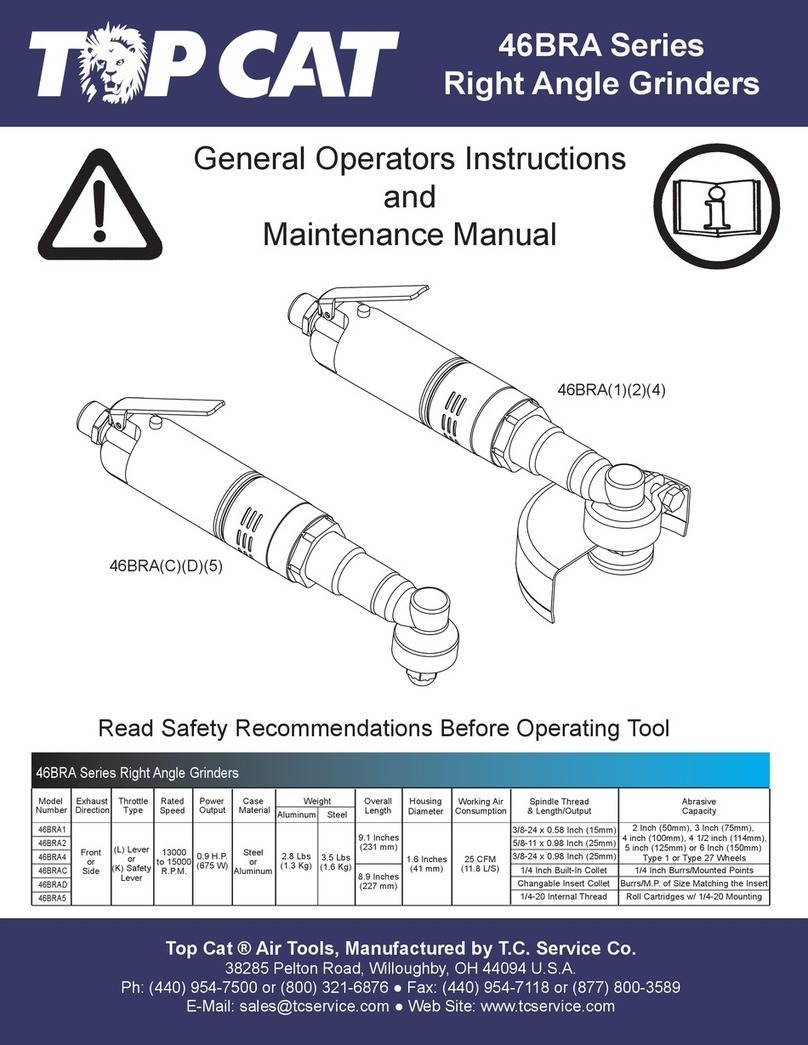
TOP CAT
TOP CAT 46BRA1; 46BRA2; 46BRA4; 46BRAC; 46BRAD;... Instructions for use

TOP CAT
TOP CAT 56APC Series Instructions for use
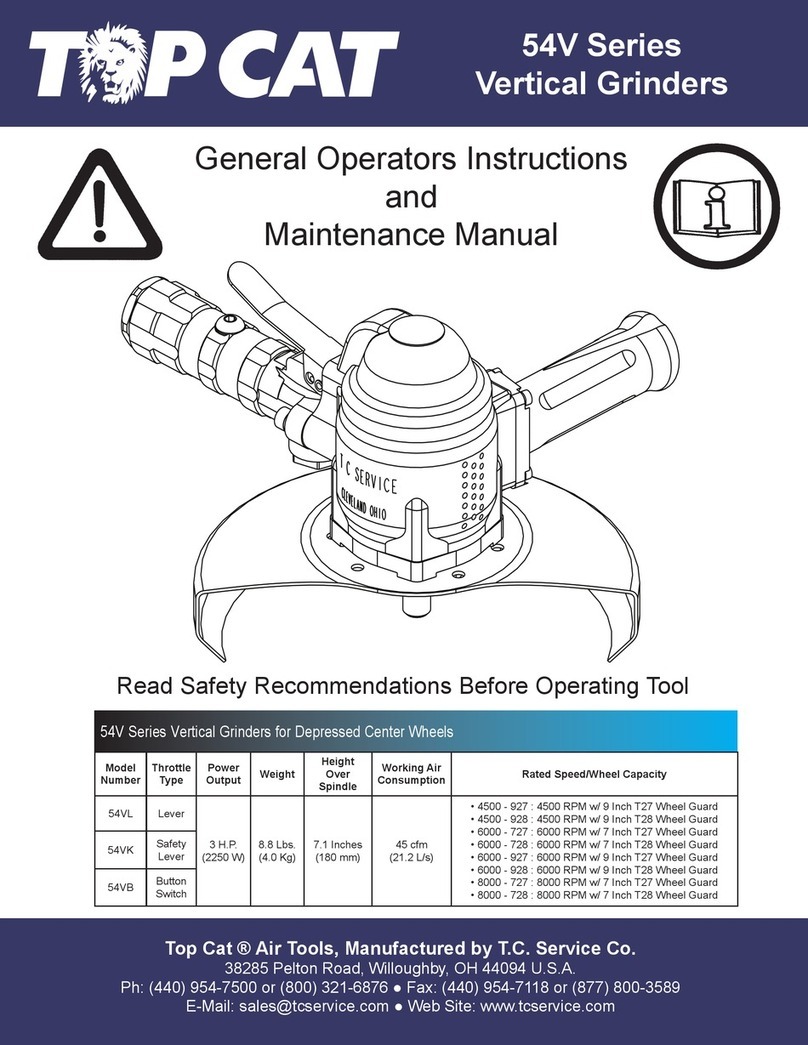
TOP CAT
TOP CAT 54VL Instructions for use
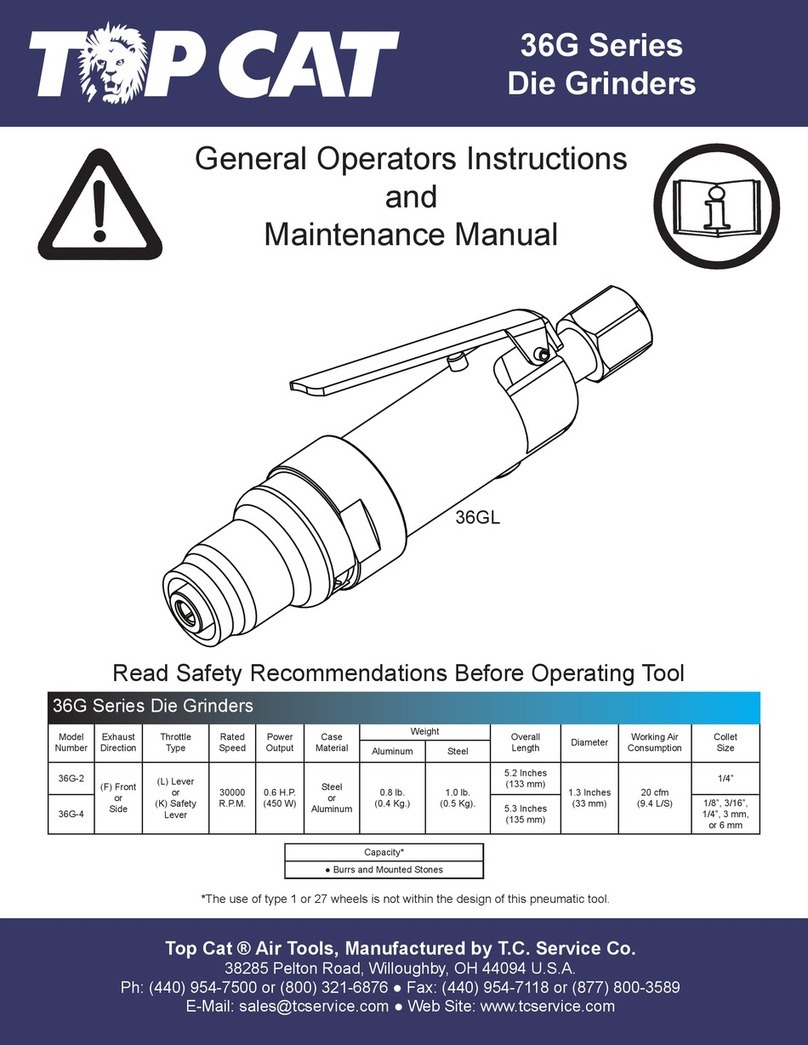
TOP CAT
TOP CAT 36G-2 Instructions for use

TOP CAT
TOP CAT 41G; 41G+3; 41G+6; 41G-CW Instructions for use

TOP CAT
TOP CAT 64VL8000 727 Instructions for use
Popular Grinder manuals by other brands
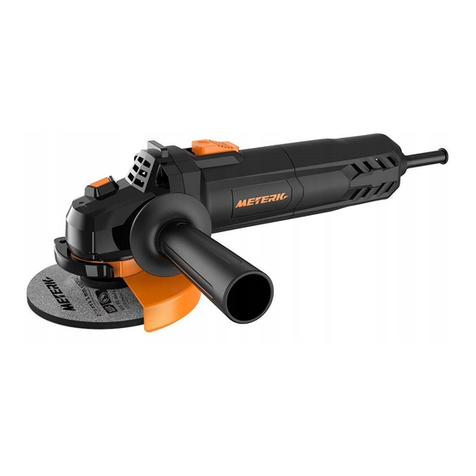
Meterk
Meterk S1M-GW20-115 Translation of the original instructions
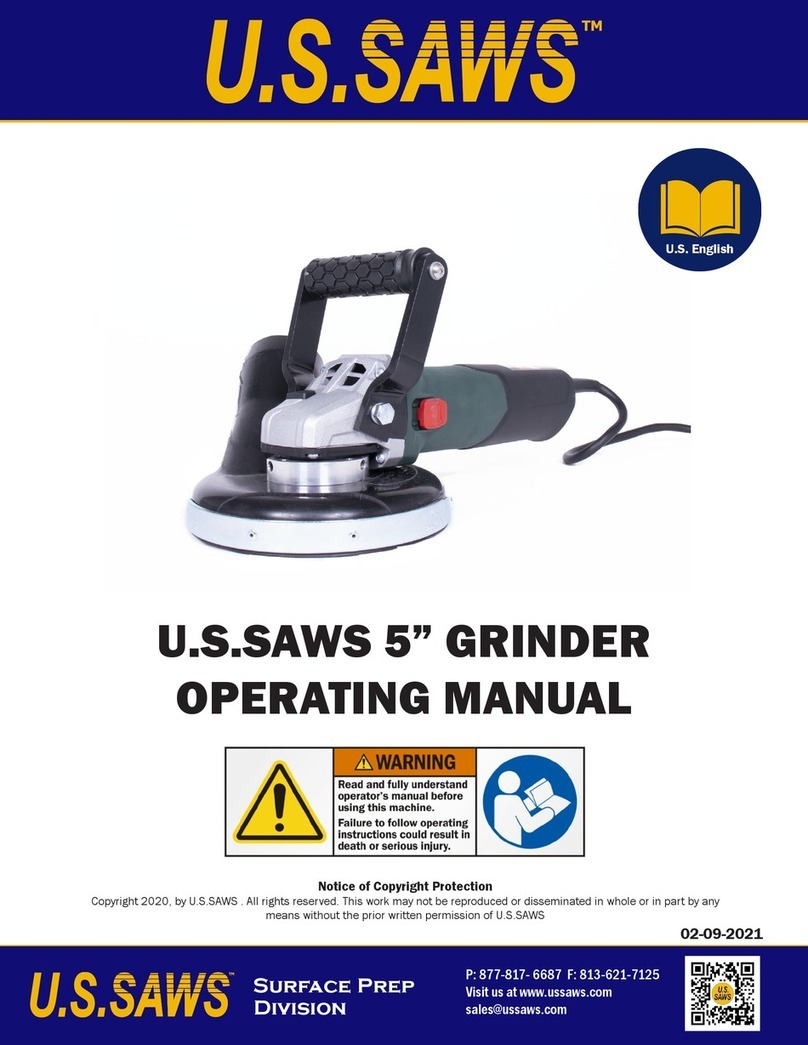
U.S.SAWS
U.S.SAWS SX65000C operating manual
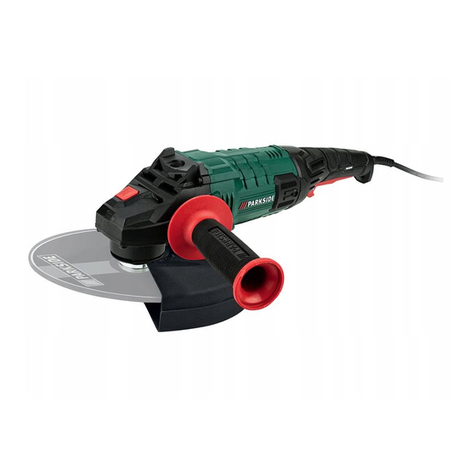
Parkside
Parkside PWS 230 C3 Translation of the original instructions

SUHNER ABRASIVE
SUHNER ABRASIVE ASC 9 Technical document

PTA
PTA P1322 Operation manual

Craftsman
Craftsman CMCG400 instruction manual


